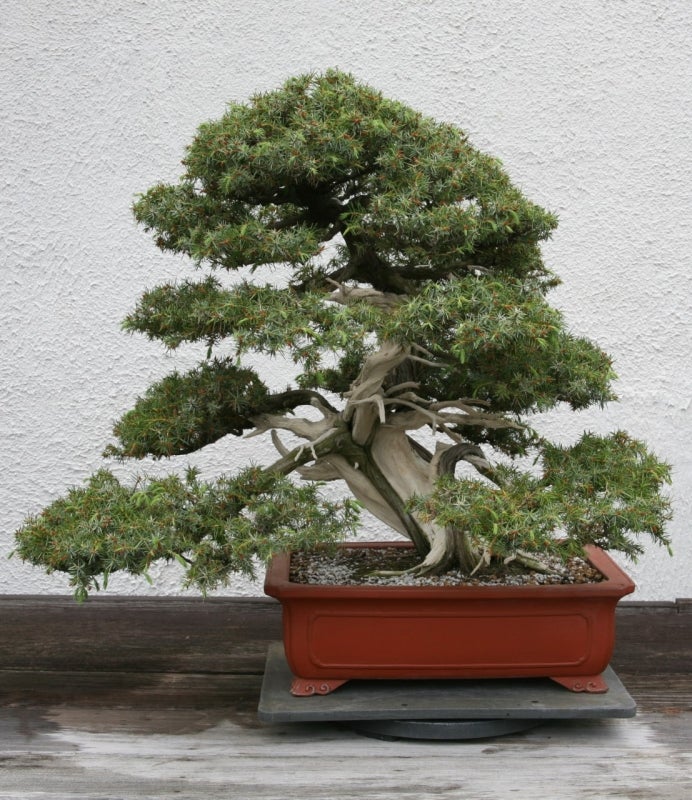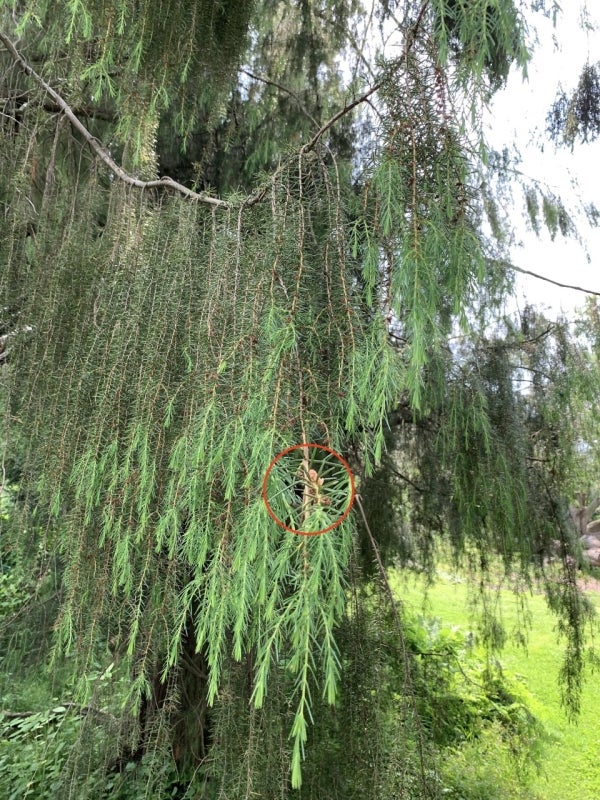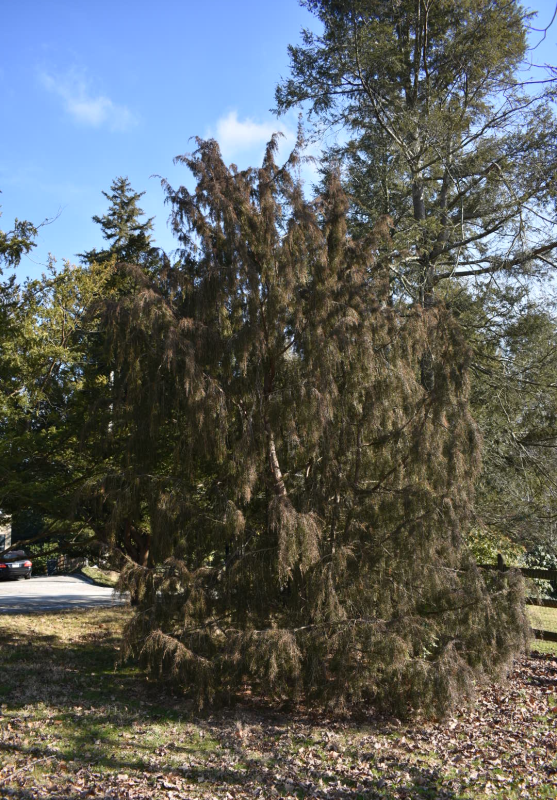Blog


Temple juniper is an evergreen conifer tree whose common name conveys that it is traditionally found planted on temple or other sacred grounds in Japan. The evergreen nature of the plant imbues it with an air of immortality. This majestic tree, that can grow up to 32 feet and is native to Northeastern Asia, has graceful weeping branchlets and a deep resinous scent. Male and female trees are separate, and female trees bear dark purple, berry-like cones often called “juniper berries.” Temple juniper is also prized as a bonsai subject.
The scientific name, Juniperus rigida, is much more pragmatic. Juniperus is from the classic Latin name for the genus. Rigida refers to the rigid, needle-like leaves, so sharp that another common name for this tree is “needle juniper.” The species was discovered by Philipp Franz von Siebold during his exploration of Japan.



As with art, the provenance of a botanical garden specimen tree is critical; a misidentified tree could cause mass confusion. The Morris Arboretum has two specimens labeled Juniperus rigida, each with its own fascinating history. The 1935 accession was acquired as a plant from the Montgomery Evergreen Nursery Inc. in CT, owned by Colonel Robert H. Montgomery. A self-made man whose formal education stopped at age fourteen, Montgomery went on to become Columbia University’s first accounting professor and a co-founder of what is now called PricewaterhouseCoopers. He was also a renowned collector of both native and exotic conifers, which he amassed on his estate in Cos Cob, CT. Seeing a niche market, he opened an eponymous evergreen nursery business, but it was soon dissolved after the banking crisis of 1933, and many plants were then distributed to botanical gardens. The 1935 Juniperus rigida specimen received from Montgomery is especially remarkable because of its age and beauty, and is featured on the American Conifer Society website.

The Morris Arboretum’s younger Juniperus rigida specimen was acquired in 1996; it was received from the Holden Arboretum in Kirkland, Ohio, which traces the tree to a 1993 expedition to Heilongjiang, China. The Holden Arboretum was gifted to the people of Northeastern Ohio by Albert Fairchild Holden, the president of the Island Creek Coal Co., as a memorial for his daughter, Elizabeth, who died in 1908 at the age of twelve. In 2013, the Holden Arboretum merged with the Cleveland Botanical Garden to become Holden Forests & Gardens, currently the 12th largest public garden in the US.
If you are lucky enough to visit the Morris Arboretum to appreciate the trees in person, check out Collection Connection for an exact mapping of these two junipers and all the specimens at the Arboretum. The well-documented origins and sources of all the plants at the Arboretum are listed in the Catalogue of Plants.
Katherine has her Certificate in Botany from the New York Botanical Garden and is a botanical tour guide and free-lance writer. You can contact her with comments or requests for photos at botanicaltours.weebly.com